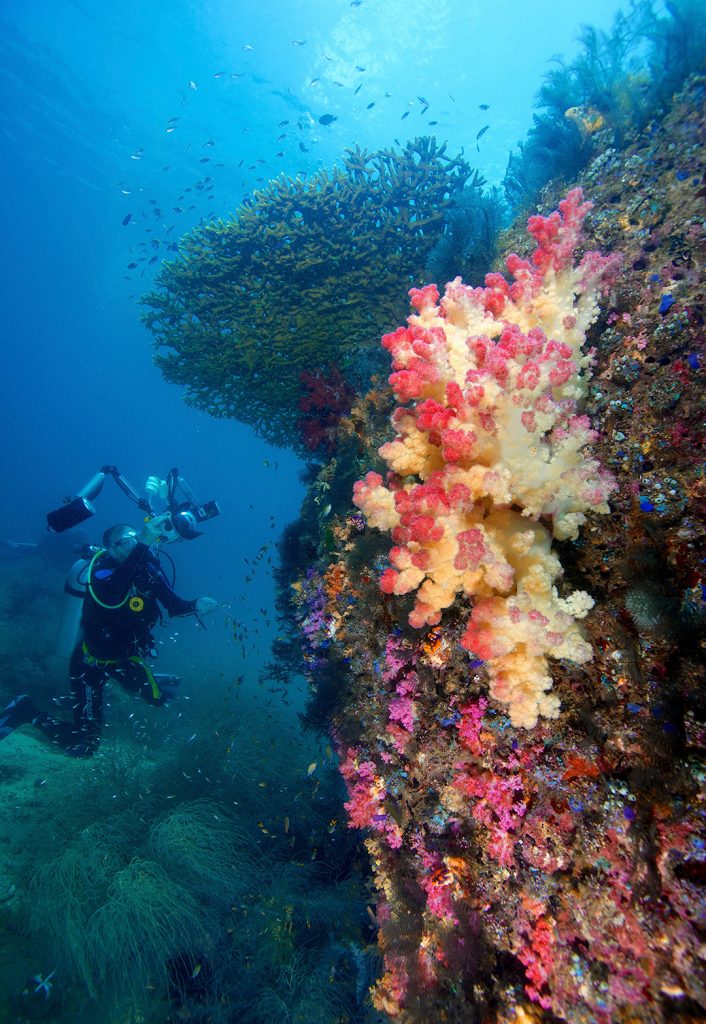Using Resilience Assessments to Inform Management
Managers around the world are conducting resilience assessments to identify reefs most likely to survive climate change and prioritize management actions to support resilience.
A recent study by McLeod et al. 2020 found that coral reef resilience assessments are most used to inform the following management actions:
- Marine Spatial Planning - Informing marine protected areas (MPAs), MPA networks, and locally managed marine areas (LMMAs); identifying priority sites for protection due to bleaching vulnerability or high resilience; informing seascape or marine spatial planning
- Fisheries Management - Outlawing and controlling harvesting; informing fisheries regulations; setting export quotas
- Local Threat Reduction - Reducing impacts from boat anchoring, tourism damage, invasive species, and nutrient and sediment pollution
- Monitoring and Evaluation - Informing future resilience and bleaching monitoring protocols
- Restoration - Prioritizing sites for coral reef restoration

A diverse reef slope in Raja Ampat, Indonesia. Photo © Gregory Piper/Ocean Image Bank
Recommendations
This study also identified challenges with applying resilience assessment information and provided recommendations to guide future efforts to conduct and apply resilience assessment results to management efforts.
Building Local Support
- Develop resilience assessment priorities in partnership with local stakeholders, ensure data is shared amongst partners, and explore opportunities for local community members to engage as citizen scientists ref
- Include managers and decision-makers in all stages of the assessment and identify local champions to support implementation ref
- Develop communication materials showcasing the importance of managing for resilience and share how assessments can be used in management actions
- Share the results of resilience assessments to promote reef conservation and greater awareness of the importance of reefs
- Share how local stakeholders and community members can play a role in reef resilience by reducing damage to the reef and encouraging protection of resilient areas ref
- Promote effective collaboration between scientists, communities, and local government officials to integrate scientific data into policy and adaptation measures
- Conduct social assessments to identify key stakeholders and to assess implementation opportunities and constraints ref
- Develop a map of the structure and hierarchy of decision-making within the local government to understand key influencers, appropriate communication channels, and opportunities for influencing decision-makers ref
Guidance on Indicators
- Utilize locally relevant resilience indicators that have strong links to resistance or recovery, that are based on local knowledge, and that can be assessed using the same methodology for all sites ref
- Consider coastal communities in combination with other factors influencing resilience potential, as higher populations around potentially resilient reefs may pose risk of eroding reef resilience ref
- Consider the historical disturbance regime of reefs and projections of future exposure when interpreting assessment results ref
- Incorporate long-term trends of the status of indicators to assess the effectiveness of management actions and to inform adaptive management ref
- Use remote sensing data when possible to develop an understanding of where field data are lacking ref
- Including social resilience indicators as well as ecological indicators (e.g., changes in population, governance, and technology) ref
Assessment Timing
- Align the timing of when a resilience assessment is conducted with management decision-making processes (e.g., rezoning of MPA) ref
- Consider how disturbance events (e.g., hurricanes, bleaching events) could provide opportunities for increased awareness of climate impacts on reefs and create public action to support reefs
Cost-Benefit Analysis
- Standardize how costs associated with resilience assessments are recorded, including planning costs, field equipment, staff salaries, food and lodging for survey team, and in-kind contributions ref
- Provide decision-makers with a cost-benefit analysis of potential management actions in combination with resilience assessment results to help prioritize management actions ref
Case Study
View the presentation below to learn how coral reef managers in Hawaii used resilience assessments to inform local reef management.
